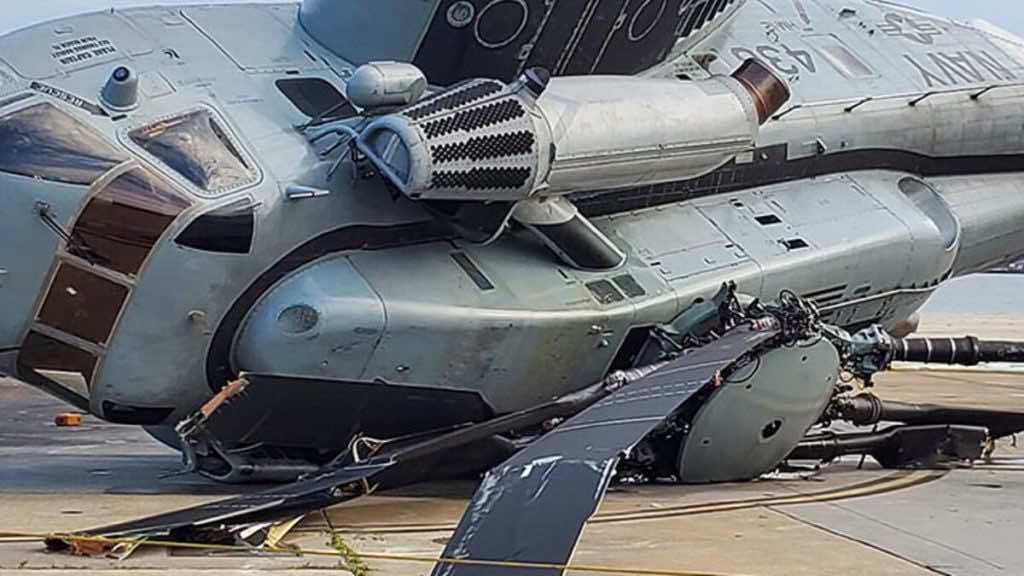In this week’s concerning news, the U.S Navy went into a major trial as a result of strong winds that struck Naval Station Norfolk in Virginia. On Tuesday afternoon, it has been reported that at least three helicopters of the U.S. Navy have gone inverted after being hit by a thunderstorm in this region. The alarming photos of these flipped helicopters went viral on the internet, and you can see the damage being done to these helicopters in the images below. However, no official statement has been released yet from the U.S. Navy and the declaration regarding the exact number of helicopters being damaged is still awaited.
However, the National Weather Service department had already notified the U.S. Navy of a “severe thunderstorm warning,” including the possibility of 60-mile-per-hour winds at 3:30 pm, as reported by WAVY. In view of that, a spokesperson for Naval Air Force Atlantic (AIRLANT), Commander Robert Mayers, said that no human life has so far been injured but confirmed the (unannounced disclosure of) damage that has been done to some of their helicopters. Myers further stated, “First responders and military personnel are on the scene to conduct further assessments.”
The pictures shared on social media demonstrate that the helicopters affected by the turbulent winds are the MH-53E Sea Dragon, MH-60R, and S Seahawk variants. All of these helicopters have been managed and operated at Naval Station Norfolk. “A broken tail and a bent rotor blade” are visible damages that have been done as a result of these gusty winds on at least two of the helicopters. Coupled with this, the maximum gross weight of the MH-53E Sea Dragon revolves around 69,750 pounds and that of the MH-60R and S Seahawk variants is around 23,500 pounds each.
By seeing these heavyweights, it can be assumed how strong the winds were that they have easily flipped these helicopters down. According to USNI News, the U.S Navy has classified the damage as a “Class A” mishap, which constitutes a “loss of $2.5 million in the form of damage done, or at least one fatality, or meeting both criteria.” To that end, no loss of life has been reported by the U.S Navy, which confirms that this Class A mishap would be quantified in terms of damage being done on helicopters.
The news agency also reported the specific details of the incident, which they confirmed from the U.S. Navy as “High winds hit Chambers Field at 3:42 p.m. – 12 minutes after the initial warning.” From this, we can infer that all of this happened in such a short amount of time that the personnel didn’t get enough time to put the helicopters in hangars or at their designated safety positions.

